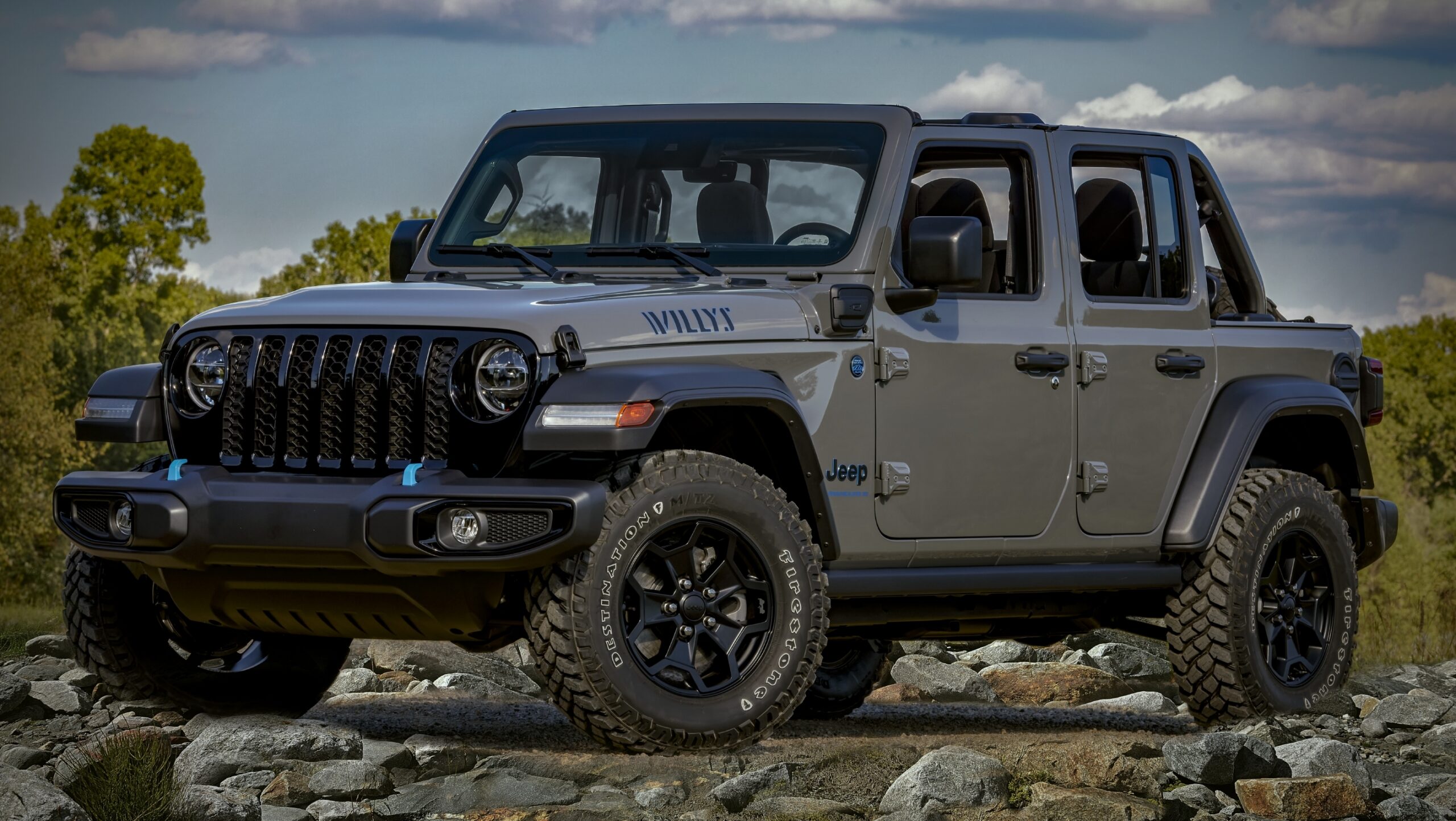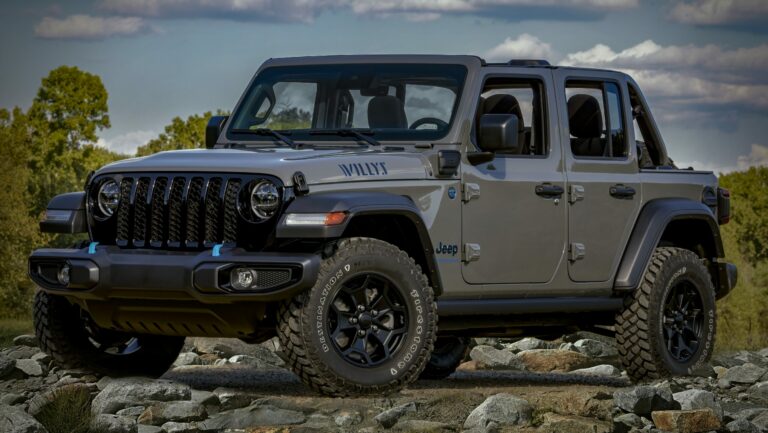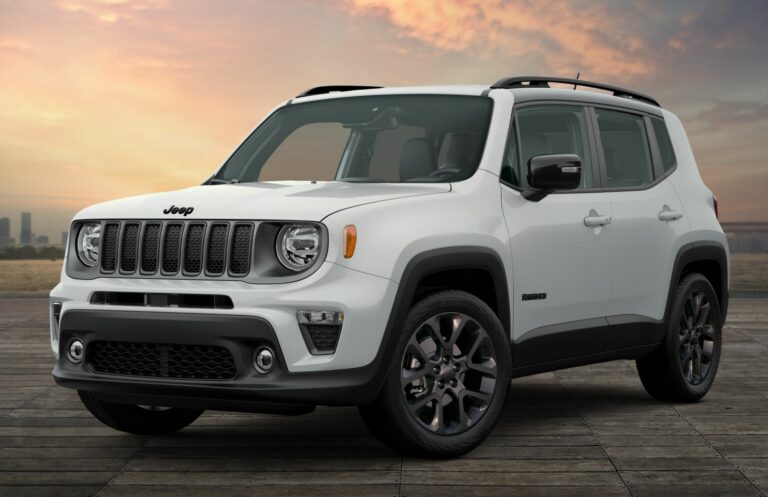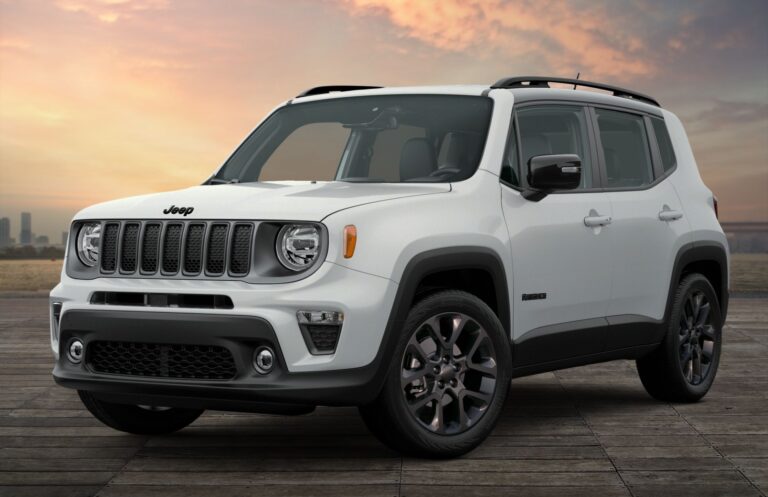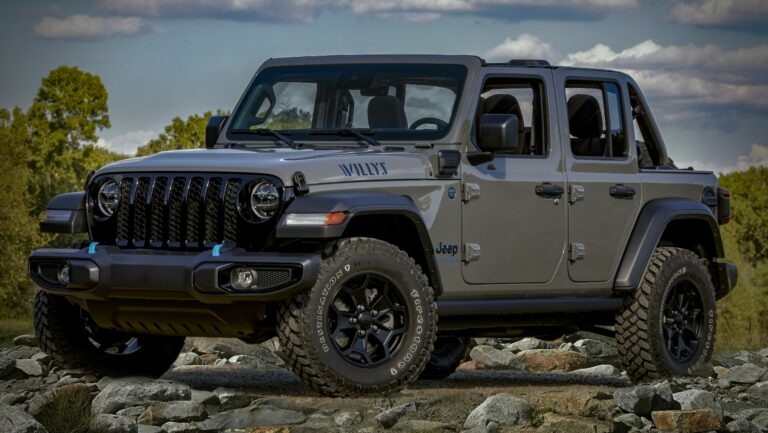Jeep Rear End For Sale: Your Ultimate Guide to Replacement and Upgrade
Jeep Rear End For Sale: Your Ultimate Guide to Replacement and Upgrade /jeeps.truckstrend.com
The Jeep, an icon of adventure and capability, owes much of its legendary status to its robust drivetrain components, particularly its axles. The rear axle, or "rear end" as it’s commonly known, is a critical assembly that transfers power from the driveshaft to the wheels, enabling movement and providing the necessary gearing for various terrains. For many Jeep owners, the phrase "Jeep Rear End For Sale" isn’t just about a simple part; it represents a solution to a problem, an opportunity for an upgrade, or the cornerstone of a custom build. Whether you’re dealing with a damaged unit, seeking to enhance off-road performance, or embarking on a full vehicle restoration, understanding the intricacies of purchasing a Jeep rear end is paramount. This comprehensive guide will navigate you through everything you need to know, from identifying the right axle to making a smart purchase.
Why Buy a Jeep Rear End? Understanding the Need
Jeep Rear End For Sale: Your Ultimate Guide to Replacement and Upgrade
The decision to seek out a Jeep rear end for sale often stems from one of several key motivations:
- Replacement for Damage or Wear: Accidents, off-road abuse, or simply high mileage can lead to bent axle housings, worn-out gears, damaged axle shafts, or seized differentials. Replacing the entire assembly can be more cost-effective and efficient than repairing individual components, especially if the damage is extensive.
- Performance Upgrade: Many stock Jeep axles, while capable, have limitations. Owners looking to install larger tires, handle more powerful engines, or tackle extreme off-road trails often upgrade to stronger, more robust axles (e.g., swapping a Dana 35 for a Dana 44 or Ford 8.8). This upgrade can involve changing gear ratios for better low-end torque or installing advanced traction devices like lockers.
- Custom Builds and Swaps: For enthusiasts building dedicated rock crawlers, desert racers, or custom Jeeps, sourcing a specific rear end is a fundamental step. This allows for precise control over axle width, mounting points, and desired strength characteristics to match the vehicle’s intended purpose.
- Gear Ratio Changes: Sometimes, the existing axle is fine, but the gear ratio isn’t suitable for the owner’s driving style or tire size. While re-gearing an existing axle is an option, sometimes finding a complete "new-to-you" axle with the desired ratio is more practical, especially if other upgrades (like a locker) are also desired.
Decoding Jeep Rear Axle Types: A Quick Reference

Jeeps have used a variety of rear axles over their long history. Knowing the common types and their typical applications is crucial for an informed purchase:
- Dana 35 (D35): Commonly found in lighter-duty Jeeps like the TJ Wrangler (front Dana 30, rear Dana 35), XJ Cherokee, YJ Wrangler, and early ZJ Grand Cherokee. Generally considered the weakest link for serious off-roading, especially with larger tires (33-inch+).
- Dana 44 (D44): A significant upgrade from the D35, found in some TJ Rubicons (front and rear D44), JK Wranglers (front D30/D44, rear D44), and some XJ Cherokees. It’s a popular choice for moderate to serious off-roading and can handle larger tires (up to 35-inch typically).
- Chrysler 8.25 (C8.25): Exclusively found in XJ Cherokees from 1991-2001. The later models (1997-2001) with 29-spline shafts are quite strong and a popular alternative to the Dana 44 for XJ owners.
- Dana 60/70/80 (D60/D70/D80): Heavy-duty axles typically found in full-size trucks. These are popular for extreme custom builds, allowing for massive tires and immense power, but require significant fabrication to fit a Jeep chassis.
- Ford 8.8 (F8.8): While not stock Jeep equipment, the Ford 8.8 (from Explorers, Rangers, etc.) is an incredibly popular and cost-effective swap for YJ, TJ, and XJ Jeeps. It’s strong, has disc brakes, and many come with limited-slip differentials.

Anatomy of a Jeep Rear End: Key Components
When looking at a complete Jeep rear end for sale, you’re buying an assembly of several critical parts:

- Axle Housing: The main tube that encases the differential and axle shafts. Its integrity is paramount – check for bends, cracks, or excessive rust.
- Axle Shafts: These transmit power from the differential to the wheels. They come in various spline counts (e.g., 27, 29, 30, 32, 35) which indicate strength.
- Differential: The central component that allows wheels to spin at different speeds during turns. It houses the ring and pinion gears and can be an open differential, limited-slip differential (LSD), or a locker.
- Ring and Pinion Gears: These gears determine the axle’s gear ratio, which affects torque and top speed. Matching the front and rear gear ratios is crucial for 4WD vehicles.
- Brake Components: This includes brake drums or disc brake assemblies (rotors, calipers, pads, backing plates).
- Mounting Brackets: Weld-on or bolt-on brackets for control arms, leaf springs, coil springs, shock absorbers, and sway bars. These vary significantly by Jeep model and must match your vehicle or be modified.
Where to Find Jeep Rear Ends For Sale
The market for used and new Jeep rear ends is diverse:
- Online Marketplaces: Websites like eBay, Craigslist, and Facebook Marketplace are flooded with used parts. Be cautious and always request detailed photos and information.
- Dedicated Jeep Forums & Classifieds: Many Jeep-specific forums have "for sale" sections where enthusiasts buy, sell, and trade parts. This often connects you with knowledgeable sellers.
- Salvage Yards/Junkyards: A traditional source for used parts. You can often inspect the part in person, but condition can be highly variable.
- Aftermarket Parts Retailers: Companies specializing in Jeep parts offer new complete axle assemblies (e.g., Dynatrac, G2 Axle & Gear) or rebuilt/strengthened stock axles.
- Specialty Off-Road Shops: Many off-road fabrication shops buy, sell, and build custom axles. They can be a great source for expert advice and quality components.
Important Considerations Before You Buy
Purchasing a Jeep rear end is a significant investment. Thorough research and careful consideration are vital:
- Compatibility: This is paramount. An axle from a JK Wrangler won’t directly bolt into a TJ, and even within the same model, there can be variations. Understand your Jeep’s year, model, engine, and transmission to ensure the axle will fit and function correctly.
- Condition (Used vs. Rebuilt vs. New):
- Used: Cheapest, but "buyer beware." Inspect thoroughly for rust, bent tubes, damaged mounting points, and excessive play. Assume it may need new bearings, seals, and potentially gears.
- Rebuilt: Often a good middle ground. A professional has disassembled, inspected, replaced worn parts, and reassembled it. Comes with more assurance but costs more than a used unit.
- New: Most expensive, but offers peace of mind and often warranties. Ideal for high-performance builds where reliability is critical.
- Gear Ratio: Crucial for 4WD vehicles – your front and rear axle ratios MUST match. Know your current ratio or what ratio you need for your tire size and driving style.
- Locker/LSD: Does the axle come with an open differential, a limited-slip differential (LSD), or a full locker? Decide what traction aid you need based on your off-road aspirations.
- Brakes: Determine if it has drum or disc brakes. If swapping, ensure your existing brake lines and master cylinder are compatible, or plan for necessary upgrades.
- Bolt Pattern: Ensure the wheel bolt pattern (e.g., 5×4.5", 5×5", 5×5.5", 6×5.5") matches your wheels or that you plan to acquire new wheels.
- Width (Wheel Mounting Surface – WMS to WMS): This is critical for tire clearance, turning radius, and overall stance. Measure your existing axle and compare it to the prospective replacement. Swapping axles often involves different widths.
- Price and Budget: Factor in the cost of the axle itself, shipping (which can be substantial for heavy parts), and any additional components (new U-joints, brake lines, fluid) or labor for installation.
- Shipping vs. Local Pickup: Large, heavy axles are expensive to ship. Local pickup can save a lot of money and allows for in-person inspection.
Inspecting a Used Jeep Rear End
If you’re considering a used unit, a thorough inspection is non-negotiable:
- Visual Inspection: Look for severe rust, cracks, dents, or signs of impact on the housing. Check for bent axle tubes (often indicated by uneven tire wear on the donor vehicle).
- Mounting Points: Inspect all control arm, spring, shock, and sway bar mounts for damage, cracks, or improper welds.
- Axle Shaft Play: Grab the end of the axle shaft and try to move it up and down, and in and out. Excessive play can indicate worn bearings.
- Differential Fluid: Look for leaks around the differential cover and pinion seal. If possible, remove the differential cover (with seller’s permission) to inspect the gears for chipped teeth or excessive wear.
- Spin the Pinion: With the driveshaft flange accessible, try to spin it by hand. It should turn smoothly with slight resistance, without excessive grinding or clunking.
- Brake Components: Check the condition of rotors, calipers, drums, and shoes. Assume you may need to replace these.
Installation and Potential Challenges
Installing a Jeep rear end can range from a straightforward bolt-in replacement to a complex fabrication project.
- DIY vs. Professional: A direct bolt-in replacement (e.g., same type of axle, same year/model) might be feasible for an experienced DIY mechanic with proper tools (jack stands, floor jack, torque wrench, basic hand tools). Axle swaps involving different types (e.g., Ford 8.8 into a TJ) often require welding and fabrication and are best left to professional shops.
- Tools Required: Beyond basic hand tools, you’ll likely need a good floor jack, sturdy jack stands, a torque wrench, possibly an impact wrench, and tools for bleeding brakes.
- Fluid and Fasteners: Always use new differential fluid, and consider replacing old bolts and nuts, especially critical ones like U-bolt nuts or control arm bolts.
- Bleeding Brakes: After installation, the brake system will need to be bled to remove air.
- Driveshaft Length: Swapping to an axle with a different pinion angle or length may require a new driveshaft or modifications.
- Unforeseen Issues: Be prepared for stripped bolts, seized components, or unexpected complications that can extend the installation time.
Practical Advice for Your Purchase
- Do Your Homework: Know your Jeep inside and out. Understand its current specifications and what you hope to achieve with the new axle.
- Measure Twice, Buy Once: Verify measurements like axle width, bolt patterns, and mounting points.
- Don’t Just Buy the Cheapest: The lowest price often means the highest risk. Prioritize condition and compatibility over initial cost savings.
- Consider the Long-Term Goal: Are you building a mild trail rig or an extreme rock crawler? Your axle choice should align with your ultimate vision.
- Ask Questions and Get Detailed Photos: Don’t hesitate to ask sellers for specific details, measurements, and high-resolution photos from multiple angles.
Price Guide: Estimated Cost of Jeep Rear Ends
The price of a Jeep rear end varies significantly based on type, condition, features (gearing, locker), and source. This table provides general estimates:
| Axle Type | Typical Jeep Application | Condition | Estimated Price Range (USD) | Key Features/Notes |
|---|---|---|---|---|
| Dana 35 | YJ, TJ, XJ, ZJ | Used | $150 – $400 | Stock replacement, adequate for light use, often needs new bearings/seals. |
| Rebuilt | $500 – $1000 | Cleaned, inspected, new wear parts, often with stock gearing. | ||
| Dana 44 | TJ Rubicon, JK, XJ (some) | Used | $500 – $1500 | Stronger stock option, popular for upgrades. Price varies with gearing/locker. |
| Rebuilt | $1500 – $3000+ | Upgraded shafts, specific gearing, choice of locker often included. | ||
| Chrysler 8.25 | XJ Cherokee | Used | $200 – $500 | Good strength for XJ, especially 29-spline models. Usually drum brakes. |
| Rebuilt | $700 – $1500 | Can be upgraded with disc brakes, stronger shafts. | ||
| Ford 8.8 | Popular swap for YJ/TJ/XJ | Used | $300 – $700 | Common upgrade, often comes with disc brakes and LSD. Requires fabrication for swap. |
| Rebuilt | $1000 – $2000+ | Fully rebuilt with new components, often with choice of gearing/locker. | ||
| Dana 60/70/80 | Custom Builds | Used | $1000 – $3000+ | Heavy-duty, requires extensive fabrication. Prices vary wildly by condition/source. |
| New (Crate) | $4000 – $8000+ | Brand new, often with specific gearing, lockers, and heavy-duty components. |
Note: Prices are estimates and can fluctuate based on market demand, location, included components (brakes, locker, shafts), and overall condition.
Frequently Asked Questions (FAQ)
Q1: Can I put a Dana 44 from a TJ into my YJ?
A1: Yes, it’s a very common and popular swap. However, it’s not a direct bolt-in. The TJ D44 has coil spring mounts and a different width than a YJ’s leaf spring setup, so fabrication (cutting off old mounts, welding on new ones) is required.
Q2: How do I know my current gear ratio?
A2: You can often find a tag on the differential cover bolts, or a sticker on the axle tube. If not, you can count the teeth on the ring and pinion gears (if the cover is off) or perform a tire rotation test (mark the driveshaft and tire, rotate the tire, and count driveshaft rotations).
Q3: What’s the difference between an open, limited-slip (LSD), and locker differential?
A3:
- Open: Allows wheels to spin independently; if one wheel loses traction, all power goes to it.
- LSD: Transfers some power to the wheel with more traction when slippage occurs, offering improved grip over an open diff.
- Locker: Mechanically locks both wheels together, forcing them to spin at the same speed, providing maximum traction but affecting steering on pavement.
Q4: Should I buy a complete axle or just the differential/gears?
A4: If your axle housing is bent or damaged, or if you’re doing a major strength upgrade, a complete axle is usually the best option. If your housing is fine and you only need to change gear ratios or add a locker, you can buy just the differential and gear set, but factor in the cost of professional installation and setup.
Q5: Is it hard to swap a rear end myself?
A5: A direct bolt-in replacement (e.g., swapping a stock Dana 35 for another stock Dana 35) is a moderate DIY job for someone with mechanical experience and proper tools. Axle swaps that require welding or significant modifications are advanced jobs best left to experienced fabricators or professional shops.
Q6: What’s axle "width" and why is it important?
A6: Axle width refers to the "wheel mounting surface to wheel mounting surface" (WMS to WMS) measurement. It’s crucial because it affects tire clearance, overall vehicle width, steering radius, and potential for tire rub on suspension components or fender flares. Mismatched widths can also look awkward.
Conclusion
The phrase "Jeep Rear End For Sale" opens up a world of possibilities for Jeep owners – from restoring a beloved rig to building an extreme off-road machine. By understanding the different axle types, their components, where to source them, and the critical considerations involved, you can navigate the market with confidence. Remember to prioritize compatibility, thoroughly inspect used units, and always factor in the total cost, including installation and any necessary upgrades. Choosing the right rear end is an investment in your Jeep’s performance, durability, and your own peace of mind, ensuring countless more adventures on and off the beaten path.
![]()
